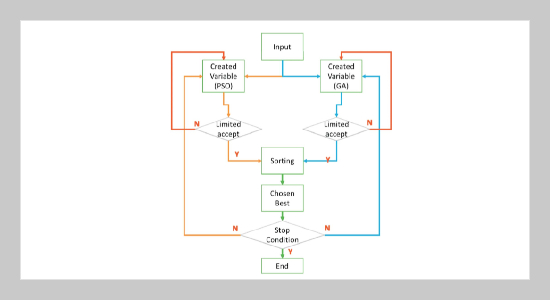REFERENCES
- [1] Jabr, R., Coonick, A. H. and Cory, B. J., “A Homogeneous Linear Programming Algorithm for the Security Constrained Economic Dispatch Problem,” Power Systems, IEEE Transactions on, Vol. 15, pp. 930�936 (2000). doi: 10.1109/59.871715
- [2] Nanda, J., “Economic Emission Load Dispatch with Line Flow Constraints Using a Classical Technique,” IEE Proceedings-Generation, Transmission and Distribution, Vol. 141, pp. 1�10 (1994). doi: 10.1049/ ip-gtd:19949770
- [3] Fan, J.-Y. and Zhang, L., “Real-time Economic Dispatch with Line Flow and Emission Constraints Using Quadratic Programming,” Power Systems, IEEE Transactions on, Vol. 13, pp. 320�325 (1998). doi: 10.1109/ 59.667345
- [4] Ross, D. W. and Kim, S., “Dynamic Economic Dispatch of Generation,” Power Apparatus and Systems, IEEE Transactions on, pp. 2060�2068 (1980). doi: 10.1109/TPAS.1980.319847
- [5] Chiang, C.-L., “Improved Genetic Algorithm for Power Economic Dispatch of Units with Valve-point Effects and Multiple Fuels,” Power Systems, IEEE Transactions on, Vol. 20, pp. 1690�1699 (2005). doi: 10.1109/ TPWRS.2005.857924
- [6] Laouer, M., Allali, A., Chaker, A. and Hachemi, K., “New Approach of Optimal Power Flow with Genetic Algorithms,” Acta Electrotechnica et Informatica Vol, Vol. 8, pp. 35�42 (2008).
- [7] Wong, K., “Short-term Hydrothermal Scheduling Part I. Simulated Annealing Approach,” IEE ProceedingsGeneration, Transmission and Distribution, Vol. 141, pp. 497�501 (1994). doi: 10.1049/ip-gtd:19941350
- [8] Huang, S.-J., “Enhancement of Hydroelectric Generation Scheduling Using Ant Colony System Based Optimization Approaches,” Energy Conversion, IEEE Transactions on, Vol. 16, pp. 296�301 (2001). doi: 10.1109/60.937211
- [9] Lin, W.-M., Cheng, F.-S. and Tsay, M.-T., “An Improved Tabu Search for Economic Dispatch with Multiple Minima,” Power Systems, IEEE Transactions on, Vol. 17, pp. 108�112 (2002). doi: 10.1109/59.982200
- [10] Yalcinoz, T. and Short, M., “Neural Networks Approach for Solving Economic Dispatch Problem with Transmission Capacity Constraints,” Power Systems, IEEE Transactions on, Vol. 13, pp. 307�313 (1998). doi: 10.1109/59.667341
- [11] Wei, L. D. P. T., “Chaotic Optimization for Economic Dispatch of Power Systems,” Proceedings of the CSEE, Vol. 20, pp. 36�40 (2000).
- [12] Ma, R., Wang, P., Yang, H. and Hu, G., “Environmental/economic Transaction Planning Using Multiobjective Particle Swarm Optimization and Non-stationary Multi-stage Assignment Penalty Function,” 2005 IEEE/ PES Transmission & Distribution Conference & Exposition: Asia and Pacific, pp. 1�6 (2005). doi: 10. 1109/TDC.2005.1546775
- [13] Bansal, R., “Optimization Methods for Electric Power Systems: An Overview,” International Journal of Emerging Electric Power Systems, Vol. 2 (2005). doi: 10.2202/1553-779X.1021
- [14] Lee, K. Y. and El-Sharkawi, M. A., Modern Heuristic Optimization Techniques: Theory and Applications to Power Systems, Vol. 39, John Wiley & Sons (2008).
- [15] Kennedy, J., “Particle Swarm Optimization,” Encyclopedia of Machine Learning, ed: Springer, pp. 760�766 (2011). doi: 10.1007/978-0-387-30164-8_630
- [16] Shi, Y. and Eberhart, R., “A Modified Particle Swarm Optimizer,” Evolutionary Computation Proceedings, 1998. IEEE World Congress on Computational Intelligence., The 1998 IEEE International Conference on, pp. 69�73 (1998). doi: 10.1109/ICEC.1998.699146
- [17] Rafiee, Z., Ganjefar, S. and Fattahi, A., “A New PSS Tuning Technique Using ICA and PSO Methods with the Fourier Transform,” 2010 18th Iranian Conference on Electrical Engineering, pp. 806�811 (2010). doi: 10.1109/IRANIANCEE.2010.5506964
- [18] Sinha, N., Chakrabarti, R. and Chattopadhyay, P., “Evolutionary Programming Techniques for Economic Load Dispatch,” Evolutionary Computation, IEEE Transactions on, Vol. 7, pp. 83�94 (2003). doi: 10. 1109/TEVC.2002.806788
- [19] Yang, H.-T., Yang, P.-C. and Huang, C.-L., “Evolutionary Programming Based Economic Dispatch for Units with Non-smooth Fuel Cost Functions,” Power Systems, IEEE Transactions on, Vol. 11, pp. 112�118 (1996). doi: 10.1109/59.485992
- [20] Chen, C.-L., “Non-convex Economic Dispatch: a Direct Search Approach,” Energy Conversion and Management, Vol. 48, pp. 219�225 (2007). doi: 10.1016/ j.enconman.2006.04.010
- [21] Coelho, L. D. S. and Mariani, V. C., “Combining of Chaotic Differential Evolution and Quadratic Programming for Economic Dispatch Optimization with Valve-point Effect,” Power Systems, IEEE Transactions on, Vol. 21, p. 1465 (2006). doi: 10.1109/ TPWRS.2006.881220
- [22] Wang, S.-K., “Non-smooth/Non-convex Economic Dispatch by a Novel Hybrid Differential Evolution Algorithm,” Generation, Transmission & Distribution, IET, Vol. 1, pp. 793�803 (2007). doi: 10.1049/ietgtd:20070183
















